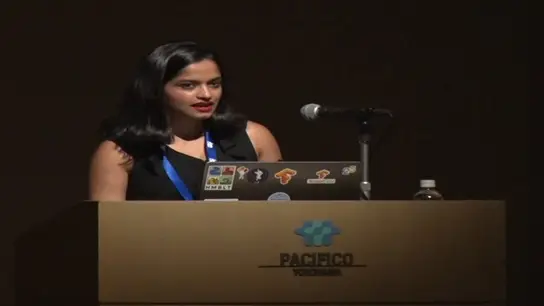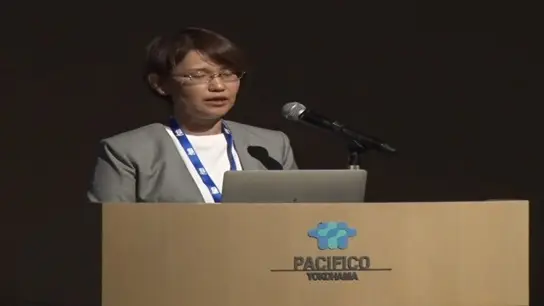-
Members: FreeCIS
IEEE Members: Free
Non-members: FreeLength: 01:47:49
06 Dec 2021
Real-world optimization problems are usually large-scale and involve several constraints and sometimes even finding a single feasible/acceptable solution is a challenging task. To solve these complex real-world problems, heuristics and concept-based approaches can be very helpful and narrow down the search space. Here, I am going to talk about four approaches used in order to incorporate information into theproblem and the optimization process, listed below:
Semi-Independent Variable
Boundary update
Variable functioning
Variable grouping and co-evolution
These four approaches are coupled with several evolutionary optimization algorithms and the results show that they are practical and effective approaches, and lead to better solutions with fewer function evaluations in most cases. This tutorial should motivate optimization researchers and practitioners to pay more attention to embedding different sources of knowledge into the optimization process to boost i
Semi-Independent Variable: In this study, the concept of a semi- independent variable (SIV) problem representation is investigated that embodies a set of expected or desired relationships among the original variables, with the goal of increasing search effectiveness and efficiency. This approach intends to eliminate the generation of infeasible solutions associated with the known relationships among the variables and cutting the search space, thereby potentially improving a search algorithm�s convergence rate and narrowing down the search space. However, this advantage does not come for free. The issue is the multiplicity of SIV formulations and their varying degree of complexity, especially with respect to variable interaction. Here, the use of automatic variable interaction analysis methods is proposed to compare and contrast different SIV formulations.Boundary update: This study introduces a new approach for implicitly handling constraints. The proposed approach reduces the consideration of infeasible solutions by directly updating variable bounds with constraints, which is called the boundary update (BU) method. Two illustrative examples are used to explain the proposed approach, followed by applying it to mathematical and engineering constrained optimization problems. Finally, a surrogate-based problem and a large-dimensional and highly constrained problem are used to evaluate the BUmethod on these types of problems.
Variable functioning: In this method, the relationships among one or more subset of variables are defined with functions using information prior to optimization; thus, instead of modifying the variables in the search process, the function variables are optimized. By using problem structure analysis technique and engineering expert knowledge, the Fx method is used to enhance the frame design optimization process as a complex real-world problem.
Variable grouping and co-evolution: In this approach, cooperative coevolution to efficiently solve optimization problems. As a case study we focus on a specific case of optimization problems with increasing or decreasing decision variables. Here, we propose a contribution-based cooperative coevolutionary framework coupled with an incremental grouping method for dealing with them. The proposed framework is promising in solving such problems in terms of both optimization accuracy and computational efficiency. In addition, the proposed method is further assessed using a real-world application.
Conclusions & Suggestions
Semi-Independent Variable
Boundary update
Variable functioning
Variable grouping and co-evolution
These four approaches are coupled with several evolutionary optimization algorithms and the results show that they are practical and effective approaches, and lead to better solutions with fewer function evaluations in most cases. This tutorial should motivate optimization researchers and practitioners to pay more attention to embedding different sources of knowledge into the optimization process to boost i
Semi-Independent Variable: In this study, the concept of a semi- independent variable (SIV) problem representation is investigated that embodies a set of expected or desired relationships among the original variables, with the goal of increasing search effectiveness and efficiency. This approach intends to eliminate the generation of infeasible solutions associated with the known relationships among the variables and cutting the search space, thereby potentially improving a search algorithm�s convergence rate and narrowing down the search space. However, this advantage does not come for free. The issue is the multiplicity of SIV formulations and their varying degree of complexity, especially with respect to variable interaction. Here, the use of automatic variable interaction analysis methods is proposed to compare and contrast different SIV formulations.Boundary update: This study introduces a new approach for implicitly handling constraints. The proposed approach reduces the consideration of infeasible solutions by directly updating variable bounds with constraints, which is called the boundary update (BU) method. Two illustrative examples are used to explain the proposed approach, followed by applying it to mathematical and engineering constrained optimization problems. Finally, a surrogate-based problem and a large-dimensional and highly constrained problem are used to evaluate the BUmethod on these types of problems.
Variable functioning: In this method, the relationships among one or more subset of variables are defined with functions using information prior to optimization; thus, instead of modifying the variables in the search process, the function variables are optimized. By using problem structure analysis technique and engineering expert knowledge, the Fx method is used to enhance the frame design optimization process as a complex real-world problem.
Variable grouping and co-evolution: In this approach, cooperative coevolution to efficiently solve optimization problems. As a case study we focus on a specific case of optimization problems with increasing or decreasing decision variables. Here, we propose a contribution-based cooperative coevolutionary framework coupled with an incremental grouping method for dealing with them. The proposed framework is promising in solving such problems in terms of both optimization accuracy and computational efficiency. In addition, the proposed method is further assessed using a real-world application.
Conclusions & Suggestions


